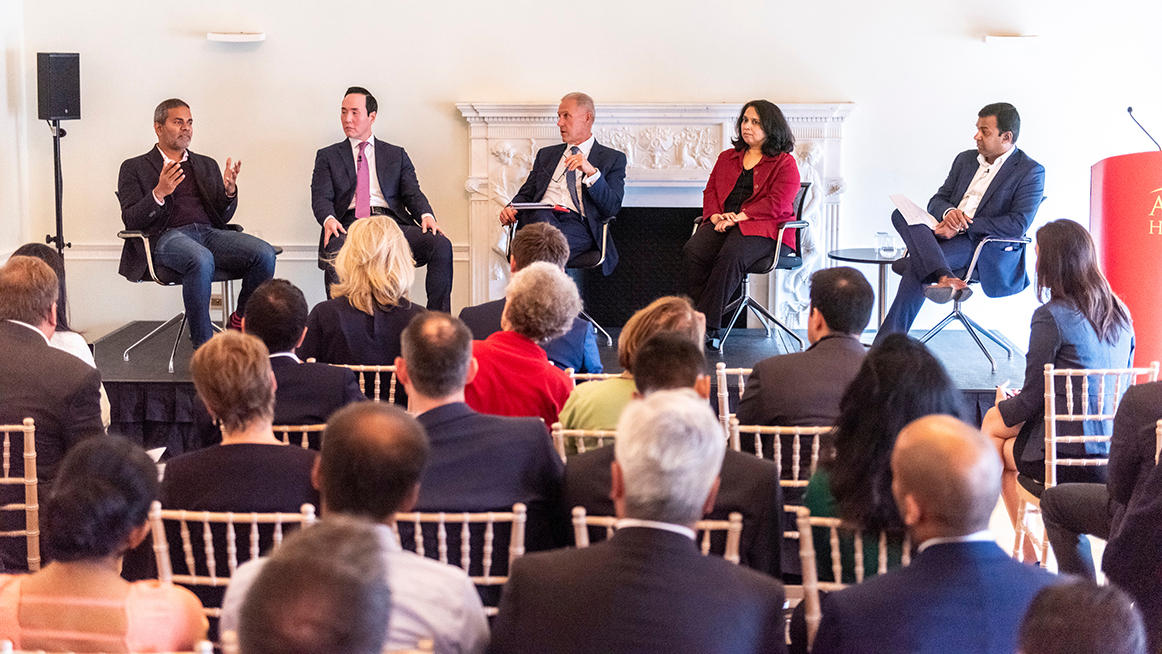Driving commercial and political engagement between Asia, the Middle East and Europe
Driving commercial and political engagement between Asia, the Middle East and Europe
Driving commercial and political engagement between Asia, the Middle East and Europe

India is in the midst of a digital revolution which promises to boost economic growth by 20 per cent over the next five years. According to a recent report by McKinsey Global Institute, some 65 million new jobs could be created by 2025 as India adopts digital technologies, while US$1 trillion could be added to the economy.
For Anu Madgavkar, Partner at McKinsey Global Institute, the challenges to realising these gains are “not trivial.”
“But neither is the prize.”
Madgavkar was speaking at the Digital India conference at Asia House, held in partnership with McKinsey & Company, which brought together thought leaders from across the finance and innovation sectors to explore the opportunities emerging as India’s digitisation accelerates.
Madgavkar opened the conference with a presentation on the key findings of McKinsey’s report, before joining a panel discussion with key figures from HSBC, Pontaq and the Indian unicorn, Freshworks.
For Lance Kawaguchi, Managing Director and Global Head, Corporates (GLCM), HSBC, the progress India has made in recent years sets it out as a key market to watch.
“From a banking perspective, I think India is one of the most exciting countries I have seen,” Kawaguchi said. “I don’t think people outside India realise just how much it’s progressed and how much opportunity there is.”
This was a point that Arun Mani, President for Europe, Freshworks, was keen to emphasise.
Freshworks develops business software, and, like many Indian startups, originally focused on building products for the US market.
“We really didn’t think India would be a top market for us,” Mani said, citing payment and regulations issues in the country. “But guess what. We’ve found out that the pull from India puts it as our number three revenue market today, after the US and UK.”
For Mani, this was a “staggering” revelation, but one which shows the viability of the Indian market for tech and innovation success.
There are, however, barriers which need to be overcome before digital India’s full potential can be realised. Key among them is education and skills, according to Prem Barthasarathy, Managing Partner at the venture capital firm, Pontaq.
Sharing a recent experience of travelling through rural India, he highlighted how mobile penetration is not a complete indicator of digitisation.
“We met a woman who owned a shop,” Barthasarathy said. “She has got a smartphone and makes 20,000 rupees a month – unheard of in rural parts of India.” But when asked what she uses her phone for, it was “receiving phone calls, making phone calls and reading texts.”
In other words, the full potential of digital technology remains unrealised across India due to a lack of digital education. “It’s synonymous to a country deciding to give cars to everybody,” Barthasarathy added. “Unless you train people how to drive, they can’t use the car.”
While the skills gap will certainly need to be bridged to ensure India reaps the rewards of digitisation, the consensus from the panel was one of optimism, and a sense of rapid change in the country. Indeed, the most striking characteristic of India’s digital revolution is its pace. According to the McKinsey report, it is the second-fastest of 17 major digital economies in terms of digital adoption, ranking behind only Indonesia.
Offering an illustrative example of this, Kawaguchi cited HSBC’s work with the National Payments Corporation of India (NPCI) to develop a unified payments interface (UPI) across the country.
“In 2016 we worked with NPCI to launch [UPI], and now you have 120 banks using it,” he said. “Last year, there were three billion transactions.
“You don’t normally see countries where the uptake is that quick. It’s really exciting.”
Digital India took place at Asia House, London, on 11 September 2019.
Watch the panel discussion and audience Q&A below
